2.4 GHz 802.11g WAN Project
Overview
Ham radio based TCP/IP network connecting major eastern Washington cities to facilitate emergency communications.
A mailing list has been created for this project: http://groups.google.com/group/hswd
Network Goals
- Provide TCP/IP data at and between remote radio sites
- Decentralized mesh architecture for simplicity of adding nodes and redundancy
Possible Applications
- High-speed backhaul for AX.25 (packet) network between cities. For example, 1200 baud link between Pullman and Spokane could be upgraded to 1-24 Mbps.
- Winlink RMS Gateway at remote RF sites
- APRS Igate at remote RF sites
- VoIP repeater linking
Network Hardware & Software Architecture
Nodes will be 802.11g access points with OpenWRT linux software. Integrated solutions like the Ubiquiti Networks NanoStation2 will work in areas with strong signal. Higher power devices such as the Bullet2HP and high-gain external antennas may be required in some situations.
OpenWRT linux with the batman-adv kernel module will be used to provide auto-routing networking. Batman-adv operates on TCP/IP layer 2 and acts like a network switch. This architecture allows the use of ethernet protocols like DHCP on top of the mesh network.
Identification requirements will be satisfied with multicast-DNS broadcasts of the node's callsign.
If an internet gateway is added to the network, care will be taken to block encryption and commercial traffic, which are not legal on ham radio.
RF Path tests with Radio Mobile software
Path between home nodes KD7LXL and K7LL:
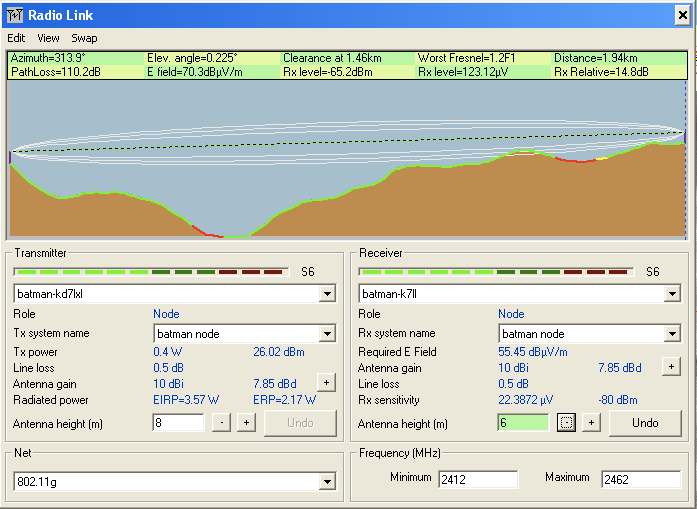
In this model, both stations are using NanoStation2 APs pointed at each other. Received signal level is calculated to be -65.2 dBm--pretty good!
Path between high node at Kamiak Butte and home node KD7LXL in Pullman:
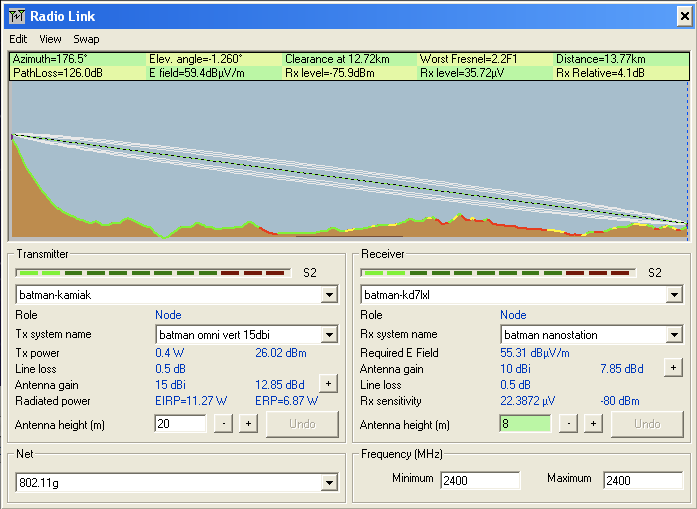
In this model, the Kamiak node is configured with a 15 dBi vertical omni-directional antenna. This antenna has a vertical beamwidth of about 8 degrees, so the calculated -1.260 degree elevation angle is well within the range of this antenna. The home station is configured with a NanoStation2 (10 dBi panel antenna). Received signal level is calculated as -75.9 dBm--good enough.
For the next model, we'll upgrade the home station to a parabolic dish antenna (19 dBi gain).
Path between high node at Kamiak Butte and home node KD7LXL in Pullman with 19 dBi parabolic dish antenna:
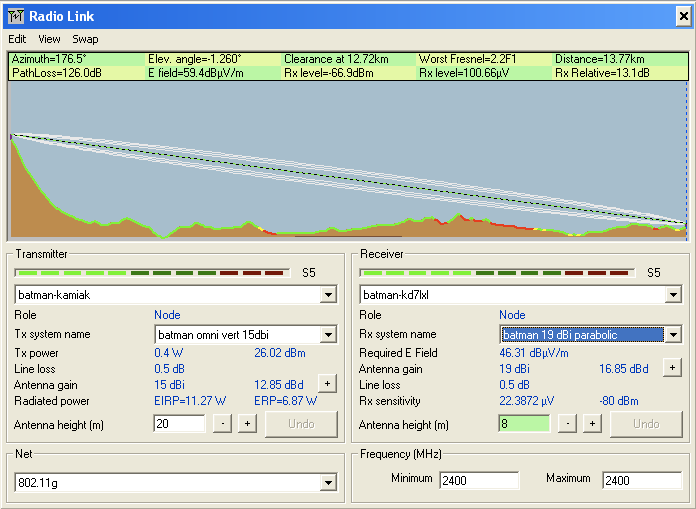
Received signal strength has improved to -66.9 dBm.
Long-range path between Kamiak Butte and a mountain near Spokane:
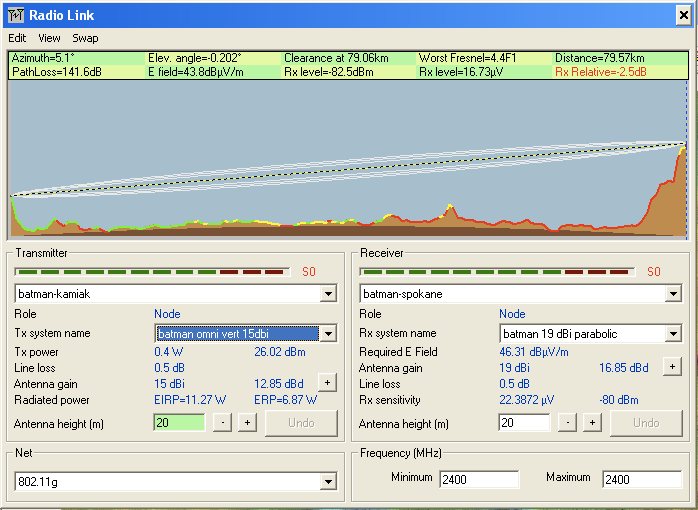
With an omnidirectional vertical on Kamiak Butte and a 19 dBi dish on a mountain near Spokane, it looks like there's not quite enough signal.
The next model will upgrade Kamiak Butte to a dedicated link to a mountain near Spokane.
Long-range path between Kamiak Butte and a mountain near Spokane (both with 19 dBi dish):
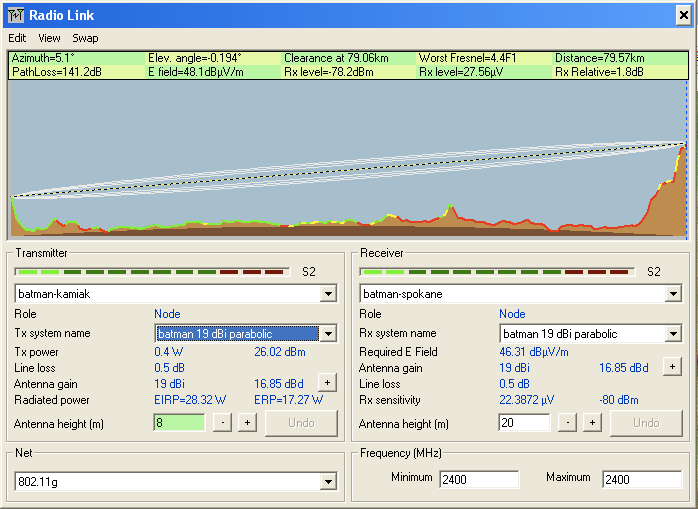
4 dBi more on the Kamiak Butte antenna seems to give us just enough gain for a connection at -78.2 dBm.
